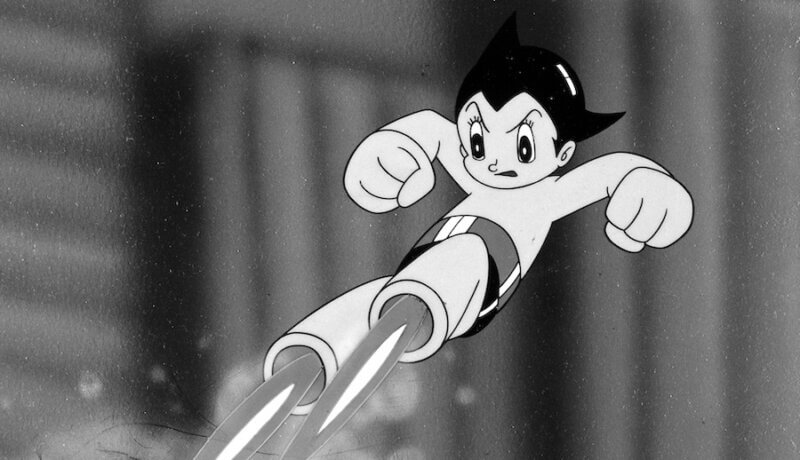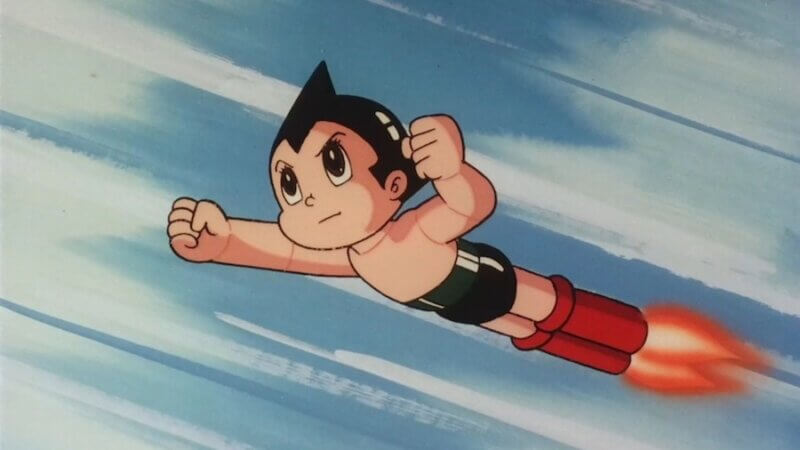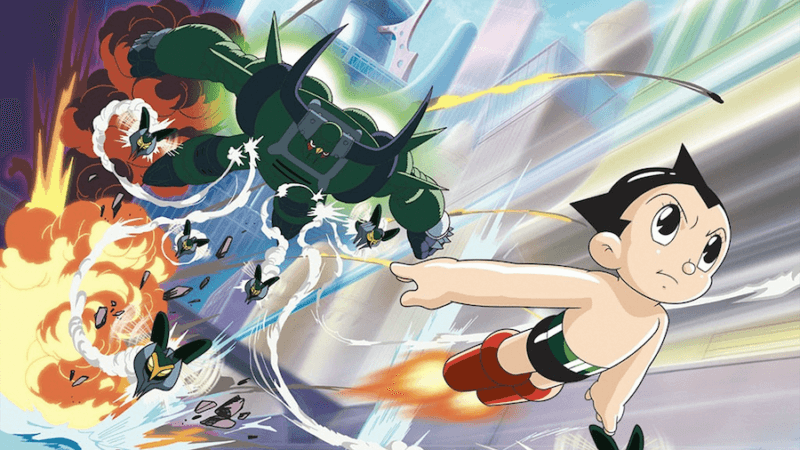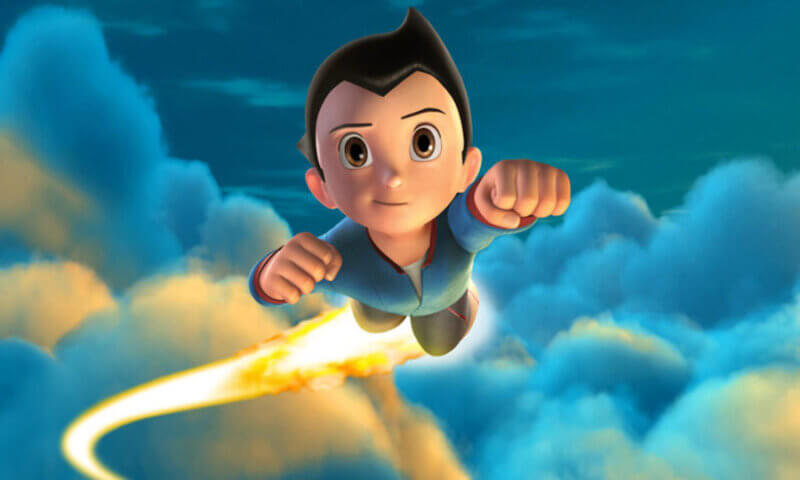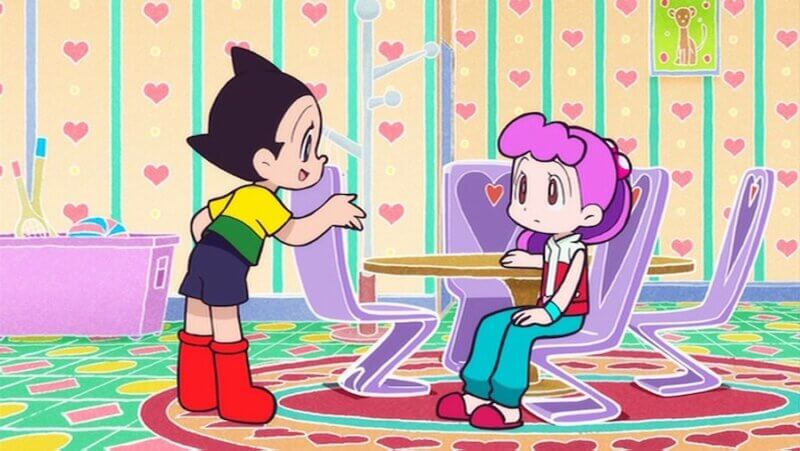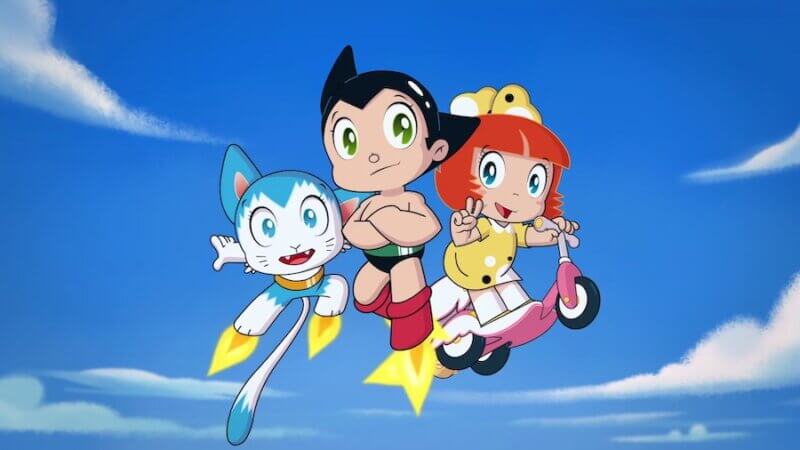60 Years of Astro Boy’s Animated Adventures
Often regarded as the man responsible for creating manga as we know it today since his debut on the pages of Mainichi Shogakusei Shinbun magazine in 1946, Osamu Tezuka would go on to create his most famous creation: Astro Boy. Introduced in Kobunsha Shōnen in 1952, readers would be introduced to the robotic superhero who would go on many imaginative adventures across Japan while taking down a variety of villains, protect humanity, and even mature whenever he stands up to prejudice against him and his robot brethren.
With the character’s massive popularity among readers of its issues, it was only a matter of time before it was turned into an animated series in 1963. Its success on the small screen may have led to several reboots and adaptations but is also fondly remembered this year for celebrating 60 years since it premiered on New Year’s Day in Japan all those years ago.
Celebrating this impressive diamond anniversary since the very first animated episode first flew onto screens, we wanted to explore the history of Osamu Tezuka’s involvement in the animation industry and the legacy that his involvement with the early Astro Boy anime productions left for the future of the icon. But this didn’t stop studios from re-introducing this influential character for a whole new generation and attempting something new with each interpretation.
Creating the First Anime Series – 1963 to 1966
After 15 years of working as a manga artist and writer for Astro Boy and other popular creations like The Jungle Emperor, Princess Knight, and My Songoku, Osamu decided to set up his own animation studio and expand his work into a new creative outlet. Mushi Production opened its doors in 1961 and premiered its first short film, Tales of a Street Corner, the following year.
However, Osamu was eying up television as a potential outlet for their next production and would prove to be a viable choice. American animation was dominating television, with Hanna-Barbera productions like The Flintstones and Top Cat proving to be popular with children, but Japan had little to no animated series to call their own. So looking at his creations, Osamu decided that Astro Boy would be perfect to adapt from the pages to the small screen.
Despite having a low budget, the animators at Mushi Production knew how to make the most out of their limited resources to bring Astro Boy to life. There are even scenes across the episodes that only consisted of 10 frames per second, too. One way they saved time and money was by creating an image bank so that each cell and drawing they made were stored safely and could be used again for future episodes, saving time and resources for re-creating a similar shot in a scene.
The series finally premiered on Fuji TV on New Year’s Day in 1963 and would push the already large popularity of Astro Boy even further, breathing life into the panels that the readers could previously only dream of. And it was also on that faithful day that Osamu created Japan’s first major animated television show and gained 40.7 per cent of viewership at its height from 193 episodes in total before the series aired the final episode on New Year’s Eve in 1966.
But this didn’t stop the superpowered robot from soaring to new horizons. During one fated trip to Japan, an unnamed representative from NBC saw the show and after returning back to America, Osamu was invited to go on his first trip to the US to potentially strike a deal with NBC to broadcast a dubbed version of the show with English-speaking voice actors. After several months following the show’s initial premiere, American children could finally enjoy the many adventures of Astro Boy. With so much success domestically and overseas, Astro Boy would cement itself as not just the first anime television show but would help create the Japanese animation industry that everyone celebrates today.
Flying Into A Colourful World – 1980 to 1981
In the years following the end of the original series run, Mushi Production was financially struggling after Osamu left the studio to become a director at Toei Animation. The studio that bought Astro Boy to life was forced to declare bankruptcy in 1973 and the rights to the show went to one of their sponsors, Meiji Seika Kaisha. In 1977, Osamu wanted to reboot Astro Boy for a new generation, but due to the rights issues with Meiji Seika Kaisha, it couldn’t be done. Instead, he wrote a new show named Jetter Mars that was a similar concept to Astro minus the name and look.
The rights to Astro Boy would not be resolved until 1980 when Osamu could finally remake his beloved series without the budget restraints he experienced during the initial show and take advantage of colour. Animated at Tezuka Productions (another animation studio Osamu founded in 1968) this time he could make the show without the restraints and had more freedom to create it the way he hoped he could.
This new interpretation was finally aired on the Nippon Television network on the 1st of October in 1980. However, this 2nd offering would have some stiff competition as there were plenty of superhero shows both from Japan and the US to compete for ratings at the time, including The Incredible Hulk, Kamen Rider, Wonder Woman, and Battle of the Planets. As a result, the show only lasted for 52 episodes and aired the last episode on the 23rd of December in 1981.
And this production would also become one of his last pieces of work in the anime industry. Tezuka Osamu died on the 9th of February in 1989 and while this meant that this would be his last involvement in an adaptation of Astro Boy, some see this as one of Tezuka Productions’ best pieces of work. But what would happen to the character? And how would the brand continue to succeed without its creator?
Landing Into A New Millennium – 2003 to 2004
After the turn of the millennium, superheroes were hitting the big screen in a major way, with Marvel’s Spider-Man, Blade, and X-Men boosting the popularity of comic book adaptations like never before. But anime shows were also experiencing a rise in global and popular culture, especially Shonōn anime like Yu-Gi-Oh and One Piece. So it seemed to be the right time for a new generation of anime and comic book fans to be introduced to Astro Boy with an ambitious new series.
It was a joint effort from Tezuka Productions, Sony Pictures Entertainment in Japan, and Sony Pictures Entertainment in LA, US that saw them attempt to create the show for both Japanese and Western audiences in mind from its initial development. With each episode costing $250,000 (US), the animators had the flexibility to animate using 24 frames per second and use computer animation to bring the futuristic world to life and make the fights some of the best that have ever been seen in any piece of Astro Boy media.
Despite the ambition and quality that went into the show, only 50 episodes were produced. Whether this was due to some of the changes to the tone and characters from the original source material or the stiff competition from new anime and superhero shows emerging frequently, it’s hard to say. But it is regarded by some as one of the best animated shows from the early 2000s and some fans even choose this as their favourite adaptation yet.
Astro Boy’s CG Cinematic Debut – 2009
Since 2001, Sony Pictures Entertainment has attempted to produce the first computer-animated feature-length film on Astro Boy. While they were working with Tezuka Productions on the 2003 series, several famed animators came on board to potentially direct this ambitious project, including Eric Leighton (who directed Disney’s Dinosaur,) David Bowers (director of Flushed Away,) and Genndy Tartakovsky (creator of Dexter’s Laboratory and Samurai Jack.) While Leighton and Tartakovsky declined, Bowers accepted the position.
As for who would be producing and animating the film, that would come down to Imagi Animation Studios in Hong Kong. They previously produced the Dreamworks series Father of the Pride and released their first feature film, TMNT, in 2007 with mixed reviews and earning enough profit from the box office to be considered a success. Astro Boy would be their second feature-length production and with a character as significant to the animation industry as Tezuka Osamu’s beloved creation, could they make a successful film from the much-loved source material?
Unfortunately, no. Despite the $65 million budget, distribution from Summit Entertainment, and a talented cast of recognisable actors like Freddie Highmore, Nicholas Cage, Kristen Bell, and Samuel L. Jackson, the film only gained just under $40 million dollars in the global box office. And with other family-friendly films released in cinemas in October of 2009 to compete with like Cloudy with a Chance of Meatballs, Where the Wild Things Are, and even a re-release of Toy Story, it just couldn’t compete with the familiar and new offerings from other studios.
The following year, Imagi Animation Studios were forced to close and file for bankruptcy due to the poor results from Astro Boy‘s performance at the global box office. Despite the hard work from all those involved, it just couldn’t quite soar. But hopefully, fans will be treated to another cinematic outing in the future and will be more welcomed by cinemagoers and critics alike next time around.
Reinvented For Preschoolers – 2014
10 years after the last Astro Boy series and 5 years after the disappointing release of the computer-animated feature, the character would be made exclusively for a demographic that hasn’t been produced before; pre-schoolers. But it was the partnership and broadcaster that would make this one of the more interesting Astro Boy adaptations to date.
This unique show would not have been possible without the interest of the Nigerian television network Channels TV. Wanting to expand their portfolio and introduce anime to their audience, they worked alongside Tezuka Productions and Yumiuri-TV Enterprises to produce and introduce Astro Boy to a new region. With Nigeria going through an economic boom during the early 2010s and Japanese studios looking to reach new territories, this seemed like a perfect opportunity for all of those involved. Channel TV even sent three staff members to Japan to learn how to make anime with Tezuka Productions and gain a greater understanding and appreciation for the art form.
As a result, not only did this African country receive its very own 8-episode Astro Boy series, but eventually saw the creation of the Taiyo Channel, the first anime-exclusive channel in Africa. It may not have been well known outside of this part of the world, but Little Astro Boy showed how changing demographics could help the character reach new fans who could learn from the hero like never before.
Move Over, Captain Planet! – 2019 to 2020
Following in the footsteps of Little Astro Boy, the titular robot would once again be made for the preschool market, although more globally available this time around. And it would also be another joint production for Tezuka Productions, this time teaming up with animation studios Something Big and Planet Nemo from France to create Go Astro Boy Go.
While previous adventures saw Astro Boy taking down criminals and villainous towering robots, this time around he’s protecting people and the ecosystem. Going around volcanoes, tornadoes, and earthquakes, he helps to teach children watching about the natural world while also saving the day with his two sidekicks made exclusively for the series injecting some comedy into the mix.
With a global audience in mind as well as the growing concern of climate change, the ecosystem proved to be a good call for the stories of this production as it made him more universally appealing and children could understand the importance of the narrative being told. It would release on TV Tokyo’s new timeslot aimed at preschoolers, Preschool Time, on the 3rd of October in 2019 and would end its original run the following year on the Japanese channel.
Despite only lasting for 52 episodes, the co-production with the French animation studios did give the show a mixture of designs so that both Western and Eastern territories could find appeal in the series and could potentially be broadcasted across the world for everyone to enjoy. Furthermore, they were able to transform this superhero property into an educational and informative show to educate as much as entertain its audience.
Going through this memory lane of Astro Boy‘s history and how each production tried to reinvent the character for a whole new generation, there’s no denying the impact that the original series had on the animation industry and how the studios and animators involved tried to create something fresh and new. What we know of anime today would not have been possible without Tezuka Osamu’s dedication and determination for the animation industry and trying to show the world just what makes his robotic character so compelling after all these years.
Go Astro Boy Go is currently available on its YouTube channel (Japanese Version) while most of the other shows and the film can be rented through Amazon Prime and bought on DVD and Blu-ray.



